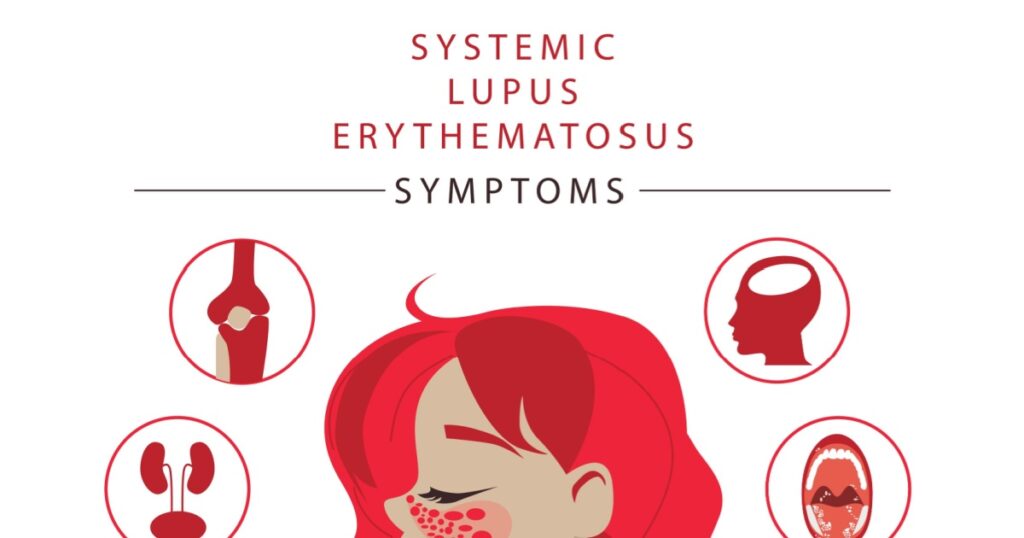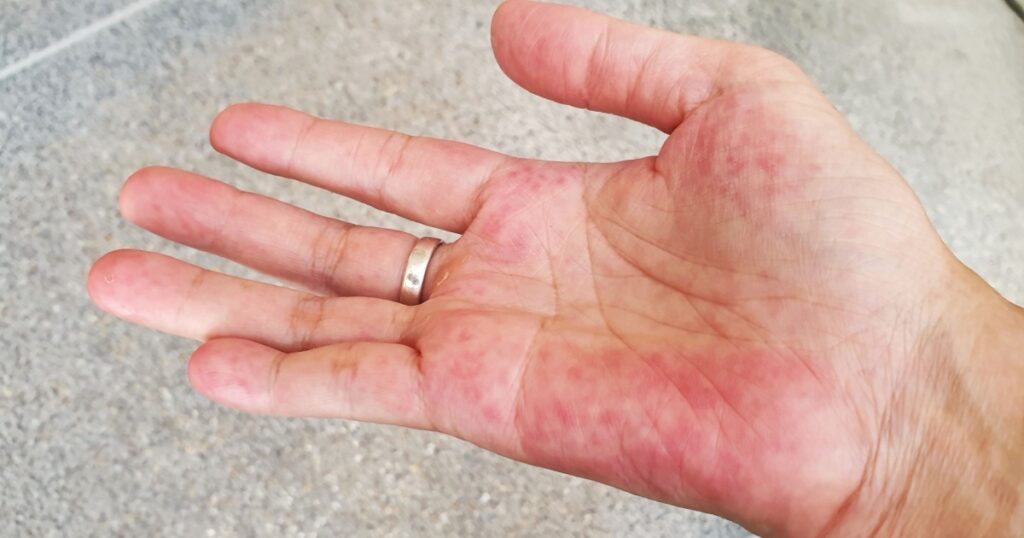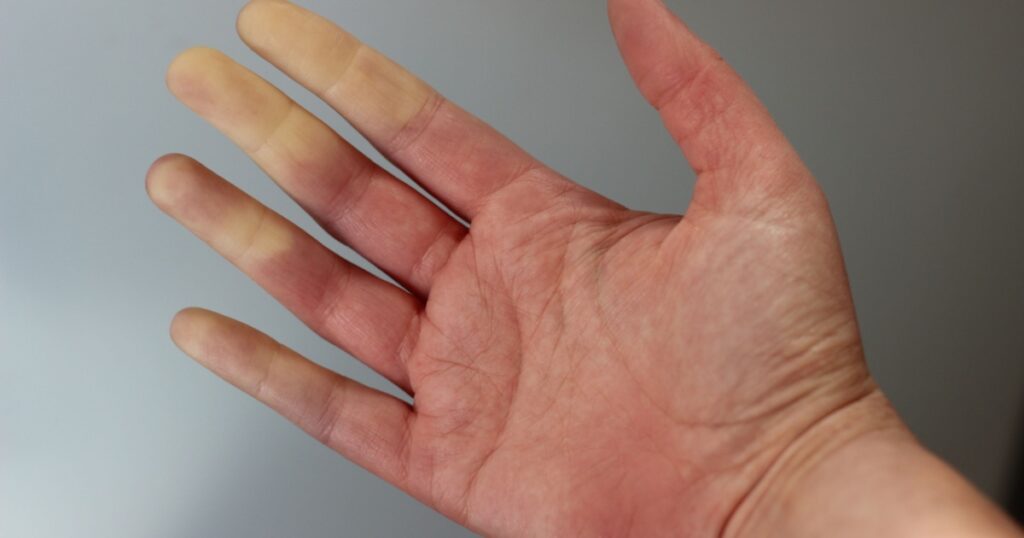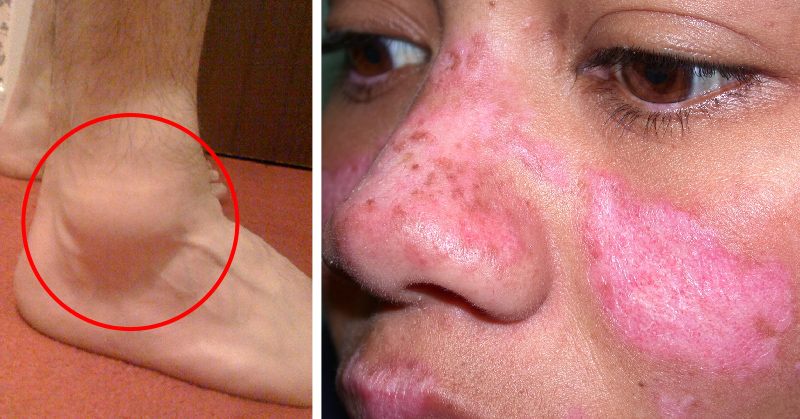Lupus, also known as systemic lupus erythematosus (SLE), is an autoimmune disease that affects millions of people worldwide. It occurs when the immune system mistakenly attacks its own tissues, leading to inflammation and damage in various organs and systems of the body. Early detection of lupus is crucial for effective management and for preventing further complications. These are 13 common symptoms of lupus to help you recognize the disease early, as well as both conventional and natural approaches to treatment.
Understanding Lupus

Lupus is a chronic autoimmune disease that can affect any part of the body, including the skin, joints, kidneys, heart, lungs and brain. It is characterized by periods of remission and flare-ups, which can be mild or severe. The exact cause of lupus is unknown, but it is thought to be triggered by a combination of genetic factors and environmental triggers such as infections or exposure to certain medications. (1)
Read More: Vitamin B12 Deficiency Symptoms that Most People Ignore
13 Common Lupus Symptoms

Lupus is more common in women than men, and it usually develops between the ages of 15 and 44. The disease can be mild or severe, with some people experiencing only mild symptoms while others have severe organ damage. Due to the fact that many of its symptoms are nonspecific and mimic other illnesses, diagnosing it can be difficult. Knowing the signs, however, can help you talk openly with your doctor and allow you to be an advocate for your own health. These are the 13 most common symptoms of Lupus (2):
1. Fatigue

One of the hallmark symptoms of lupus is extreme fatigue, even after a good night’s sleep. This fatigue can significantly impact the quality of life and may be accompanied by weakness and a general feeling of malaise.
2. Joint pain and stiffness

Lupus can cause joint pain and stiffness, often accompanied by swelling and redness. The pain may move from one joint to another and often affects the hands, wrists, knees, and ankles.
3. Skin rashes

A common skin manifestation of lupus is a characteristic butterfly-shaped rash across the cheeks and nose. This rash, known as a malar rash, is often photosensitive and worsens with sun exposure.
4. Sensitivity to sunlight

Individuals with lupus may experience increased sensitivity to sunlight or artificial light. Sun exposure can trigger or worsen symptoms like rashes, joint pain, and fatigue.
Read More: Blood Test May Be Able to Diagnose Fibromyalgia
5. Hair loss

Hair loss, or alopecia, is another symptom associated with lupus. It might be patchy or widespread, and the hair may grow back or remain thin and brittle.
6. Mouth and nose ulcers

Ulcers may develop in the mouth or nose, causing pain and discomfort. These can look like small sores or blisters, and they may be red or white in color. They are often painful to the touch.
7. Chest pain

Lupus can cause inflammation in the tissues surrounding the heart and lungs, leading to chest pain. It may worsen with deep breathing or coughing.
8. Kidney problems

Lupus can affect the kidneys, leading to various kidney disorders. Symptoms include blood or protein in the urine, high blood pressure, and swollen ankles.
9. Digestive issues

Some individuals with lupus may experience gastrointestinal problems such as acid reflux, abdominal pain, and diarrhea.
Read More: Bone Broth: Nutrition, Health Benefits, And How To Make It
10. Raynaud’s phenomenon

Raynaud’s phenomenon is a condition characterized by the narrowing of blood vessels in response to cold temperatures or stress. It can cause the fingers and toes to turn white or blue and become numb or tingly.
11. Fever

Fever is a common symptom of lupus, often occurring during disease flares. It is usually low-grade but can occasionally be high.
12. Cognitive dysfunction

Many individuals with lupus experience cognitive dysfunction or “brain fog.” This can manifest as memory problems, difficulty concentrating, and confusion.
13. Mood disorders

Depression and anxiety are common in people with lupus, and these mood disorders can significantly impact the overall quality of life.
Conventional Treatment for Lupus

Conventional treatment for lupus aims to reduce inflammation, manage symptoms, and prevent organ damage. This may involve the use of nonsteroidal anti-inflammatory drugs (NSAIDs), corticosteroids, immunosuppressant medications, and antimalarials. Additionally, regular monitoring and follow-up with healthcare professionals are essential. (3)
Read More: There’s One Way To Check For Ovarian Cancer That Nobody Talks About – Here’s Why
Natural Approaches to Lupus Treatment

While conventional treatments are vital, some individuals with lupus might also seek natural approaches to complement their medical care. It’s important to note that natural approaches should not replace prescribed medications but can be used as adjunct therapy. Some natural approaches that show promise in managing lupus symptoms include:
1. Diet and Nutrition

A balanced diet low in processed foods and rich in fruits, vegetables, whole grains, and healthy fats can support overall health and potentially reduce inflammation.
2. Exercise and Physical Activity

Regular exercise can help improve joint flexibility, reduce fatigue, and boost overall well-being.
3. Stress Management

Stress can worsen lupus symptoms, so incorporating stress management techniques like yoga, meditation, and deep breathing exercises may be beneficial.
4. Complementary Therapies

Some individuals find relief from symptoms through complementary therapies such as acupuncture, massage, and chiropractic care. These approaches can help manage pain, reduce stress, and promote relaxation.
Read More: 10 Home Remedies for Joint Pain and Arthritis
5. Herbal Supplements

Certain herbs, such as turmeric, ginger, and green tea, have anti-inflammatory properties and may be beneficial in managing lupus symptoms. However, it’s essential to consult with a healthcare professional before starting any herbal supplements.
The Bottom Line

Early detection is key when it comes to managing lupus effectively. If you suspect you may have lupus or experience any of the mentioned symptoms, it is crucial to consult with a medical professional for a proper diagnosis and appropriate treatment plan. Remember, early intervention can make a significant difference in managing lupus symptoms and improving overall quality of life.
Read More: “This Part of Your Baby Remains in Your Body For up to 38 Years,” Experts Claim
Sources
Read More: Avoid These 5 Foods if You Have Kidney Disease and Diabetes

